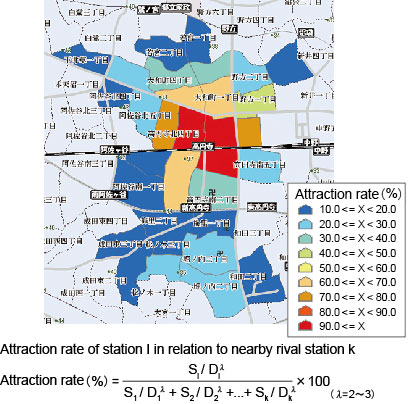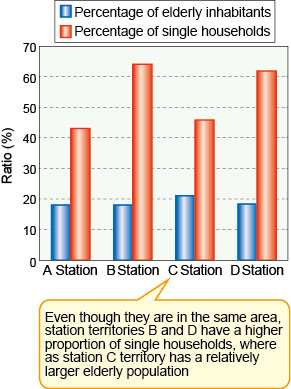3.Quantitative method for determining station territories among competing railway areas
- A method has been developed for determining station territories displaying user boundaries among competing railway areas
- The present method can be used to calculate the probable number of passengers using a station in terms of the surrounding town districts which spread out from it. This approach can contribute to estimating passenger volumes, business area analysis and station specific market research.
The definition of a station’s territory is the area surrounding it which contains potential users. Nonetheless, given the proximity of certain lines and stations, there is overlap between boundaries and it has been impossible to clearly determine the scope of these zones. As such a method for quantitatively determining a station territory was developed by modelling the competition between rival stations for passengers which serves to calculate the attraction rate expressed as a probability value (Fig.1).
The modelling equation is expressed proportionally to the station’s attractiveness “S”: composed of elements such as number of trains stopping at the station, journey time to terminal station, inter alia, and inversely proportional the square or cube of “D”: time-distance from the centre point of a district to the station. This consequently gives insight into the advantage of stations on express routes, etc, and the extent to which improving station services can increase its attraction rate in individual districts.
By combining a area’s demographic and working population data and the attractiveness rate for each district into a demand prediction model, it is easy to obtain detailed passenger volume forecasts for areas subject to sudden population hikes, something which previous methods could not do accurately. Furthermore, station territory population may also be described in terms of inhabitant characteristics, such as proportion of elderly population, etc (Fig.2), which can guide a station’s market research for improving facilities and services.

Fig.1 Example of station territory calculation
Fig.2 Analytical break down of station territory by population type